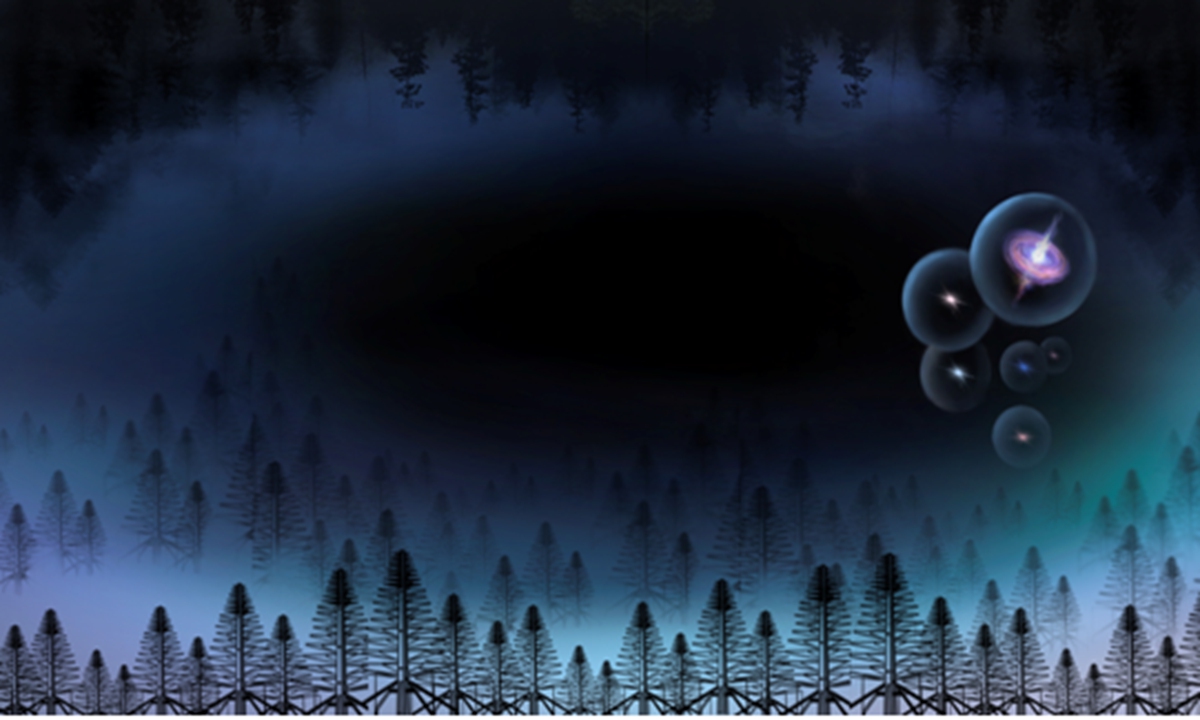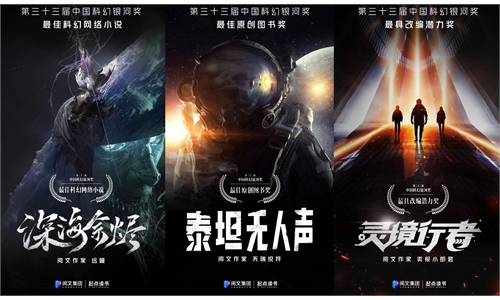Chinese astronomers find probe to simultaneously study dark matter particle mass and the first galaxies

Photo: Courtesy of National Astronomical Observatories, Chinese Academy of Sciences (NAOC)
The 21-cm absorption lines (21-cm forest) are proposed as a probe to simultaneously study dark matter (thought to govern small-scale structure formation) particle mass and the first galaxies, Chinese astronomers found, according to a statement obtained by the Global Times from the National Astronomical Observatories, Chinese Academy of Sciences (NAOC).
The research achievement by the NAOC and Northeastern University was released in the international academic journal Nature Astronomy on Friday.
The absorption features in spectra of high-redshift background radio sources, caused by hyperfine structure lines of hydrogen atoms in the intervening structures, are known collectively as "the 21-cm forest."
The 21-cm forest provides a unique detection method for the cosmic dawn and the first generation of galaxies.
By using the one-dimensional power spectrum measurement of the 21-cm forest signal of the cosmic dawn era, the future Square Kilometer Array (SKA) radio telescope will be able to simultaneously reveal the properties of the universe's first generation of galaxies and dark matter, according to the statement.
The development of this breakthrough method is of great significance for unraveling the mystery of dark matter and the formation of celestial bodies in the early universe, and will further promote our understanding of dark matter and reveal the formation and evolution of the structure of the universe, the NAOC said.
With more in-depth observations and analyses, we are expected to gain more insights into the nature of dark matter and early galaxy formation in the near future, further expanding our understanding of the universe, it noted.
How was the first generation of galaxies formed in the universe? How did they illuminate the dark ages and usher in the cosmic dawn? How was the intergalactic medium of early galaxies ionized and heated by the first generation of galaxies? These questions have always been major scientific challenges that the astronomy field has been working to answer.
Xu Yidong, associate researcher and Chen Xuelei, researcher at the National Astronomical Observatory of the Chinese Academy of Sciences, and Zhang Xin from Northeastern University are the co-corresponding authors of the paper.
Global Times


